Adobe Offsetting: May & a Krita interview
Spring is in the air, taxes are done, and it’s time to focus on fun stuff—like digital painting! Krita is attempting a second stab at success with another Kickstarter that started earlier last week. For 2015, Krita has Photoshop in their crosshairs with the anticipation of making Krita as fast or faster than Photoshop. I was able to speak to Krita’s lead developer, Boudewijn Rempt, about the 2015 Kickstarter campaign and upcoming year.
For May’s Adobe Offsetting, I’m glad to contribute to Krita’s new Kickstarter campaign. Visions of big brushes and animations are dancing in my head.
Krita in action
Big offers in 2015
Imagine free software with no lag when painting large scale work or using mammoth brushes with real-time results. Krita believes that they found the key to infusing zippiness into their program, tightening the gap between them and their Adobe Goliath.
Art in motion
Animation is another interest for Krita in 2015. Creating a dedicated timeline with keyframes will make Krita more similar to TV Paint than Photoshop. Photoshop has never had an intuitive workflow for creating 2D animations within their software. People like Alex Rigg have created animation workflows (see video below) that work in Photoshop, but Photoshop lack basic animator tools like x-sheet displays. It will be interesting to see how well Krita incorporates animation in the coming year.
Stretch goals set by you
After matching their initial goal of €20,000, Krita puts stretch goals in the hands of the patrons. The goals range from improved layer handling, transform tools, workflow, features and fills, or brushes. Individuals who donate will get the opportunity to vote for their favorite goal. If the stretch amount is reached, the most popular of the goals will get rolled into Krita’s 2015 development.
Why Krita is worth trying

The painting in Krita is really exceptional, making it unique from other software. Krita’s primary focus has been to create an impressive digital painting tool. The number of brushes in Krita are almost exhaustive. I keep finding new brushes to use as I dabble more in the program.
Krita already has elements which are unique to any Adobe product. In a lot of ways, Krita can be considered a mash up of Illustrator and Photoshop, giving you the ability to create both vector and raster layers. You can create vector layers directly in Krita, giving you access to multiple vector drafting tools in order to create a hybrid of both vector and pixel.
Unlike programs like Gimp, I find Krita to be closest aligned to Photoshop’s UI, making the learning curve super low. Many times I’ve compared using Gimp to drawing with my left hand. Tool behaviors, layers, and effects behave similar to their Adobe counterpart, simplifying the transition from Photoshop to Krita.
A conversation with Krita’s Boudewijn Rempt
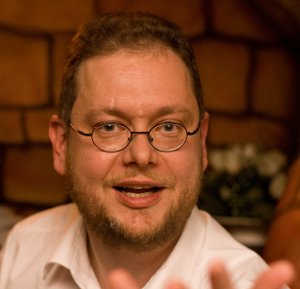
2014 was an outstanding year for Krita with the success of your Kickstarter, the adoption of Krita over Photoshop at Paris 8, earning the ImagineFX Artists Choice award, and version 2.8 with added stretch goals. Boudewijn Rempt, lead developer of the Krita project, was nice enough take time out of his busy day to talk more about.
How did you get involved with Krita?
Well, I was writing a novel… And I needed to draw a map, because it was a fantasy novel, so I tried to do that with Gimp. I was already a Linux user back then! I didn’t really understand the way Gimp worked, so I started writing my own drawing application. That wasn’t a big success either, since I was completely ignorant of how to do that! Then I looked around for existing projects to help out with, and Krita caught my attention. Mainly because it didn’t do anything much, but seemed to have a thorough foundation. Back in 2003, after the third complete rewrite, you could load images in layers and move the layers around, but there wasn’t any other tool! No painting, no filters — nothing! So there was plenty to do even for me, and fortunately, around that time people like Sven Langkamp and Cyrille Berger also started working on Krita. They’re still around, too!
You spend a lot of your time answering questions and creating a consistent presence on social media for Krita. When do you sleep?
Well, I get a lot of help. Wolthera manages tumblr, deviantArt. Irina helps out with the interviews, Scott with the website, Leinir with twitter (though I’m doing the Krita twitter account myself). I actually am not that good with social media, I don’t get most of the interaction somehow—especially facebook puzzles me a lot! As for sleeping, well, I usually manage to catch my eight hours, no need to worry about that! Since I work from home, the commute is minimal 🙂

What was the biggest challenge you faced last year for 2014’s Kickstarter campaign?
Getting started! We had planned for March, and it became June because there was always something new to do and figure out. We also had actually too much well-meant advice. Don’t do it in June, there’s soccer going on, do it now, postpone to September, don’t have a talking-heads video, don’t go live without a talking heads video, show more artwork, don’t show artwork — this year was quite a bit smoother!
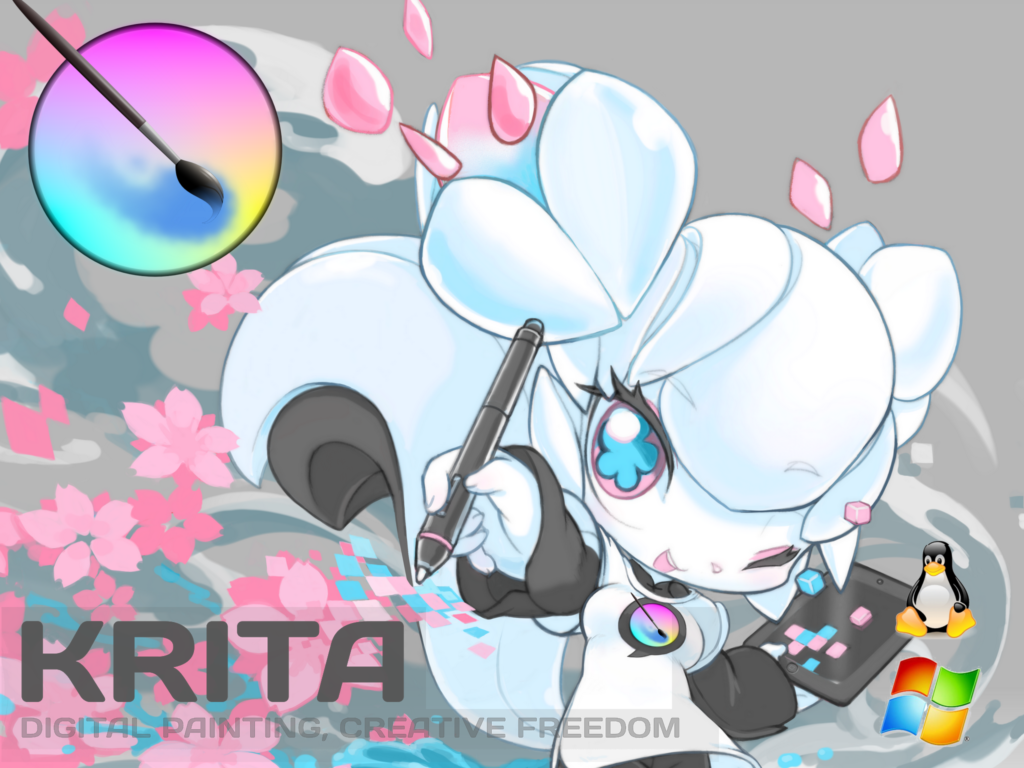
What lessons did you learn for 2015’s campaign?
One thing that backers really seemed to appreciate were the frequent updates. I try to have a daily status update, and even after the campaign closed, I tried to keep people up to date whenever something important happened. The thing is, I really like people. I like to see that people have a good time with Krita, I like to see people stay around, whether they help out with this or that, or not. Having this community is one of the greatest things about working on Krita! Wait, that isn’t exactly the answer — I’ve been doing that anyway.
So, my shortlist of Important Things for a Kickstarter:
- Show involvement and keep people involved
- Start on time
- Make the video short (Wolthera did an awesome job this year)
- Show that you can be depended on: too many kickstarters take the money and run
What do you do when you’re not talking about or developing Krita?
I read a lot, usually an hour or two before falling asleep and then an hour before getting up (that’s included in the regular eight hours, though). All kinds of stuff, ranging from fantasy and sf to history and linguistics. I started out as a linguist, actually… Specialized in the Tibeto-Burman languages of the hill tribes from Nepal: I really feel bad about doing all this kickstarter stuff while the earthquake in Nepal has caused such devastation. But if we want to go on having Dmitry work full-time on Krita, there’s nothing we can do but forge ahead.
I also do sculpture in my spare time. Real, analog sculpture, using soft modelling wax. I’ve been doing that since I was a teenager, with a big gap when my kids were young. I’m even having some of my stuff cast in bronze.
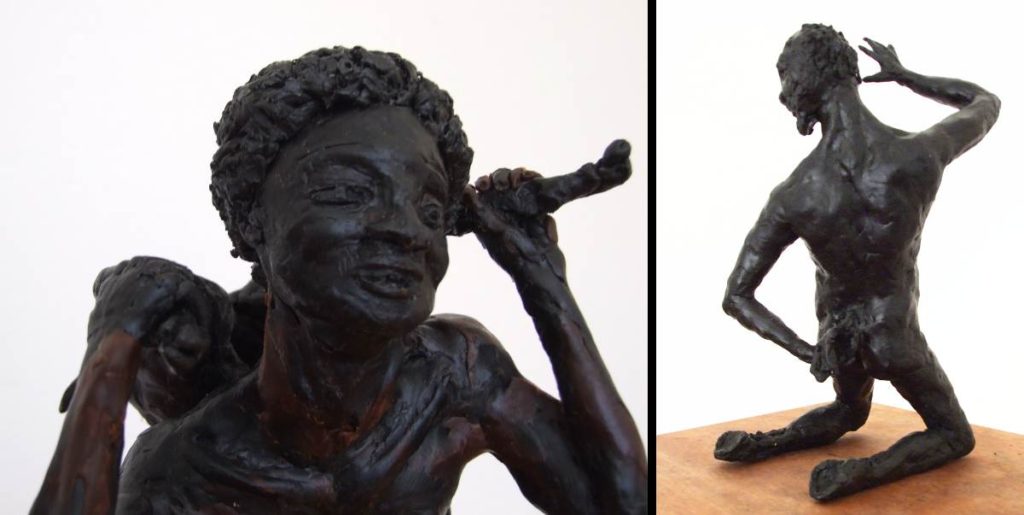
What keeps you dedicated to developing Krita?
It’s just so much fun 🙂 The code challenges are interesting, seeing what people do with Krita is interesting, the team is full of great people!

How many people work on Krita? Are there any dedicated staff?
It depends a bit, people come and go. All in all, over six hundred people have left their mark on Krita. Right now, it’s about a dozen people. Dmitry is full-time, funded by the Kickstarter, I’m part-time, the rest are volunteers.
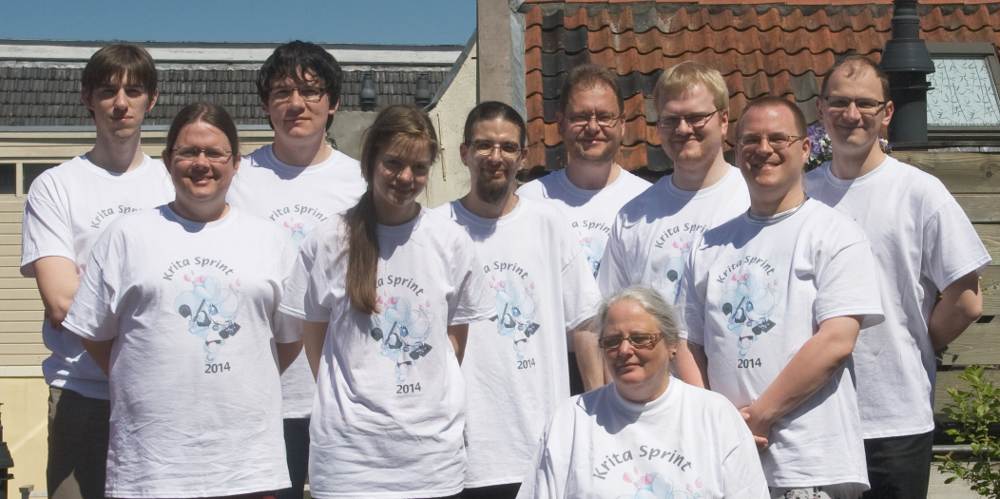
Do you find it difficult to recruit talented developers?
I’m not really doing recruitment — people happen by and start hacking. Sometimes they are users who are interested in fixing something that hampers them — sometimes they even teach themselves C++ just so they can fix, e.g., a color selector. Sometimes they are students interested in a Google Summer of Code Project, sometimes professional C++ developers with more experience than I have who want to work on some interesting bits of code. Everyone is welcome, no matter their level of experience. I always try to remember that I didn’t know any C++ when I started working on Krita!
What makes Krita stand out compared to other digital painting software?
Well, if you look around the field, there aren’t all that many painting applications that actually do color management: Artrage, SAI, OpenCanvas, PaintStorm, they all basically do 8 bit RGB. Photoshop does more, but even Photoshop has trouble fully supporting HDR painting. We’ve supported that for quite some time. Since Krita is heavily plugin-based, we’ve got a dozen or so different brush engines, and there’s always room for one more. And we, more than some other projects, I feel, are open to the user’s needs.
Thank you so much for working with Yiynova monitor tablets to upgrade drivers to work with their products on Linux. Have you continued the relationship?
Yes — we’ve got a good relationship with Yiynova Nederland!
With the adoption of Krita in Paris 8 University’s curriculum, do you think other higher-education institutions will follow suit?
I hope so. I know that several South American Universities and Art Colleges are using free software, and Krita was used at an Art College in Germany as well. At Siggraph 2014, I met a lot of people from schools, colleges and universities who were very interested. Often though, they need a good OSX version, and that’s a pain right now.

Many community colleges and smaller universities in the U.S. are struggling to upgrade their classrooms with Adobe due inflated subscription pricing. Is Adobe Creative Cloud’s subscription structure creating more opportunities for user interest?
That’s definitely what people are telling me 🙂
What is the main goal of Krita for the coming years of development. Do you have a clear roadmap set up or is your approach more based on responding to the more fluid needs of users?
There’s a basic list of things to do:
- Add scripting
- Fully support OSX
- Much better text tool with full typographical control
- Native SVG support instead of ODG
- Port to the next version of Qt, Qt5
- Paint on a 3D model
- Use 3D models as painting guides
And then there are things that come up while talking to artists, workflow improvements, brush improvements, new file formats that need to be supported… It’s always a bit of this, and a bit of that. We didn’t just put in the 12 stretch goals from last year’s kickstarter in 2.9.4, we also had the multi-image gui (which took two years to develop) and a host of other features and fixes.
Krita has been gaining more and more mainstream visibility in the digital arts community. Can you describe who the average Krita user is?
I’m not sure about average… We seem to have users from the whole spectrum from talented amateur school kid to professional illustrator. Krita’s been used on big movies and independent productions, there are collectible card games made with Krita and Facebook games, there are assets painting for big 3D games and comics… No, I’m sure that there’s no average left!

 With your phenomenal award and review in ImagingFX magazine, do you feel like Krita has finally emerged as an industry standard or do you have more work to get there?
With your phenomenal award and review in ImagingFX magazine, do you feel like Krita has finally emerged as an industry standard or do you have more work to get there?
There’s always more work to be done! Smoother Windows and OSX support, better performance, improved PSD compatibility, that’s really what we need to get onto more people’s computers!
What does 2015 look like for Krita?
A bit tighter than 2014: my company went almost broke and had to lay off everyone except for one guy — and that wasn’t me. So I had to find some other work to pay the mortgage, which wasn’t a problem, but it means I’m not working on Krita full-time at the moment. On the other hand, the Krita Foundation is growing a lot, our first Kickstarter week was pretty amazing, and Dmitry is doing a great job. We’ll get our Qt5 port, our performance optimizations and it even looks like the Python scripting is going to make it, thanks to Cyrille!
Krita is available on Mac, Windows, Linux, and Steam. Are there any plans for making a version for tablets? Will Krita Sketch eventually evolve into a tablet solution?
Sketch was designed as a tablet solution for Intel. They needed an application to show off Windows 8 based tablets. A port to Android is something that’s probably going to come after the Qt5 port. But I am worried about performance, also because I find all drawing applications on Android laggy and slow… And Krita can be quite demanding! I’m using Krita myself on a Surface Pro 3, the lowest-end model, and that is actually fine. But I managed to break Sketch when I merged the multi-image, multi-document support, and need to fix that…
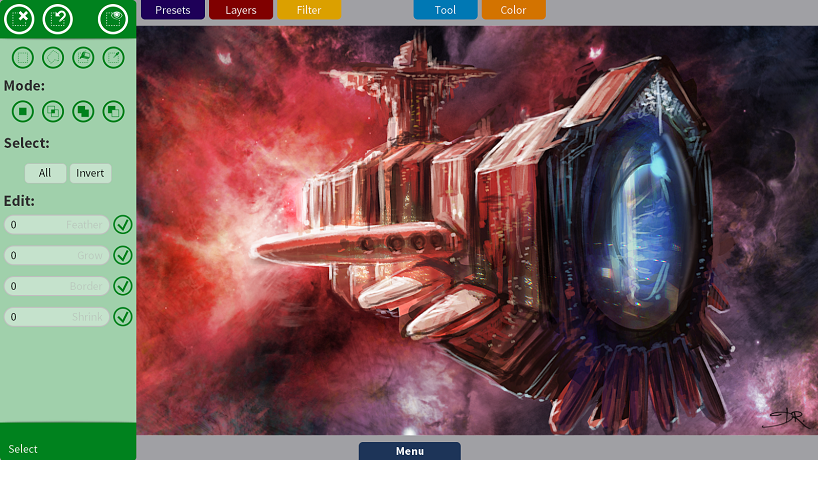
Is Krita working to improve support for importing SVGs and other vector file types? I tried to import an ODG file without success. Is there any way of getting my Inscape artwork into Krita as native vector?
Not right now. We had that, but the conversion code was really bad, and I had to disable it. It’s on the TODO, but it’s a big, big task. About half of the code is actually already written, but then the author got a bad attack of real life and had to leave the project.
One major tool I find missing in Krita is Photoshop’s smart objects. I use smart object in order to apply non-destructive effects like gaussian blur. It give me the ability to manage multiple effects, using masks and keeping the effect separate from the art. Is that something Krita might be able to do in the near future?
Actually, I’m not too familiar with Photoshop. The most recent version I’ve seen was CS2. So I’m not actually sure how smart objects work 🙂 But, well, we have filter masks: you can create a mask and associate it with a filter, and that’s non-destructive and dynamic. It probably works a bit differently, but it is exactly what we intended to be used to add, e.g. a bit of blur to part of a layer. Same with filter layers — or transform masks. Take a look at the combination of transform masks and clone layers in this video:
Wow! That’s exactly what I thought I was missing! I’m truly blown away by this. I think that many other Photoshop professionals have the same hurdle with Krita. Have you ever thought of creating a Photoshop-to-Krita quick start manual?
Yes, but it’s both outdated and a little bit tentative: http://files.kde.org/krita/marketing/IntroductiontoKritaforusercomingfromPs.pdf.
It could do with expanding!
Is there any value to partnering with other open source software like Tupi who is also in the process of creating a horizontal timeline for animation?
I regularly check out Tupi, and have had chats with the author. But actually sharing code is a problem because the applications are done in a completely different way. The Tupi timeline is so deeply integrated with the internal data model that it’d be hard to make it a shared component. Same with the Pencil2D timeline, which I also looked at!
Tupi also has a function similar to Adobe’s smart objects, allowing users to import assets to the program from other sources like Gimp and Inkscape. While in Tupi, you can open up the imported asset in their original software and edit the file. The end results are updated in Tupi once the file is saved. Is that code that Tupi and Krita can share?
Actually… We already have that! You can add an external image in Krita as a file layer (this is different from importing an image as a layer!), and then add masks (transparency, filter, transform…) or clone the file layer into other places in the layer stack, and add other masks. And when you edit the original file in an external applications, it’ll get reloaded in Krita automatically and the layer stack re-rerendered.
Again! That’s incredible! I tried the file layer option and it worked great with raster images! I did have problems with ODG files (vector). Are vectors a problem here also?
Yes. Right now, the best way to embed external vector images is by using a vector shape. There’s a special docker that’ll allow you draw any of a number of predefined ‘shapes’ into a vector layer. One of those is the vector image shape, and that should render most vector images correctly, and then you can use filter layers and things on the vector layer.
What’s the greatest challenge Krita faces?
It sounds trite, but it’s managing the increase in the userbase. We need to come up with ways for users to help each other, because I can’t handle more than twenty, thirty support mails to foundation@krita.org a week! We’re working on a questions-and-answers website now, for instance. A secondary challenge is keeping the code manageable. Making it simpler whenever we can! Unfortunately, over time, codes trends the other way!
What’s your dream version of Krita look like?
I’m always really happy with the current version, weird as it may sound. And then I check the previous version after a release and I’m surprised at how much Krita improved. But 2.9.4 is pretty good! Well, there are a bunch of bugs we need to fix…
What’s your favorite thing to work on with Krita?
Difficult question… I really work on all parts, except the pure maths that are needed for some algorithms. I have to leave that to people who didn’t flunk maths in high school, like I did. I even don’t mind working on the PSD import/export code. But I’m happiest, I think, when I’m working on a bug or a wish that will make a user really happy when it’s committed. Improvements in workflow come up high on my list!
Thanks so much for your time, Boudewijn! It was very enlightening for me and I’m sure others who are interested in replacing their current dependence on Adobe Photoshop. The amount of work completed on the Krita project in only the past 12 months should encourage others to start supporting Krita via their current Kickstarter or by volunteering time. Good luck with your fundraising efforts and the next version of Krita.
Additional support
As part of my monthly contribution, I am also a subscribing member of the Blender Cloud with a reoccurring monthly donation. If you are first learning Blender, this site is a wonderful resource of videos for learning modeling and animation techniques. They also have access to all the art and assets from their upcoming open-source animation, Cosmos Laundromat.

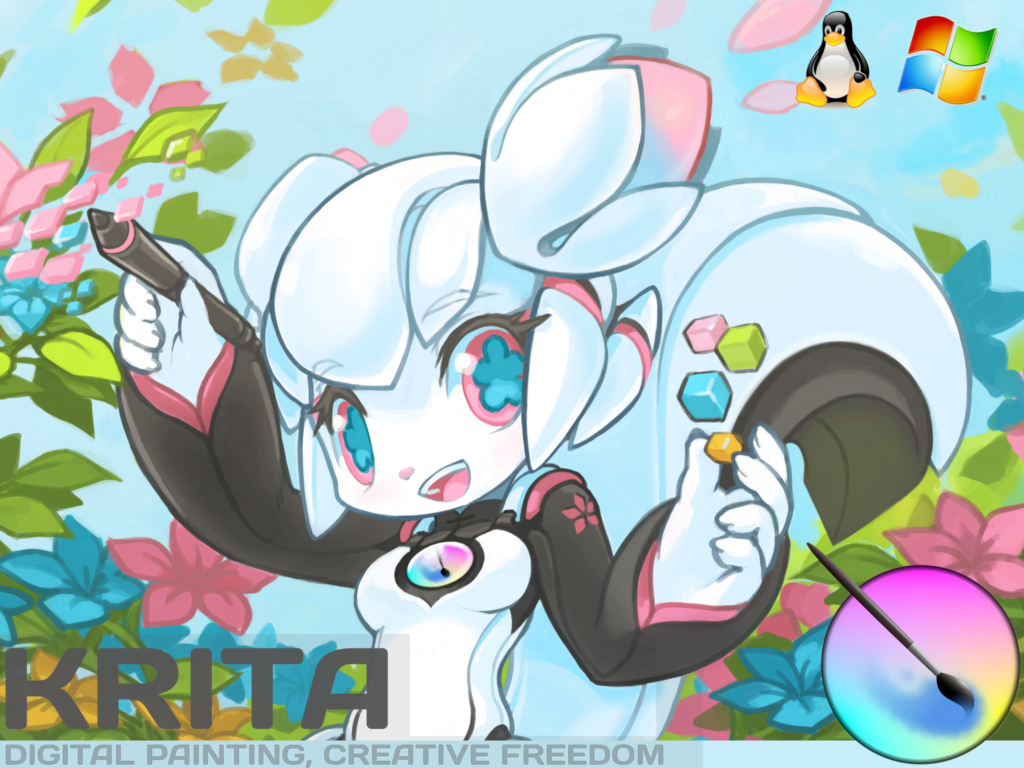

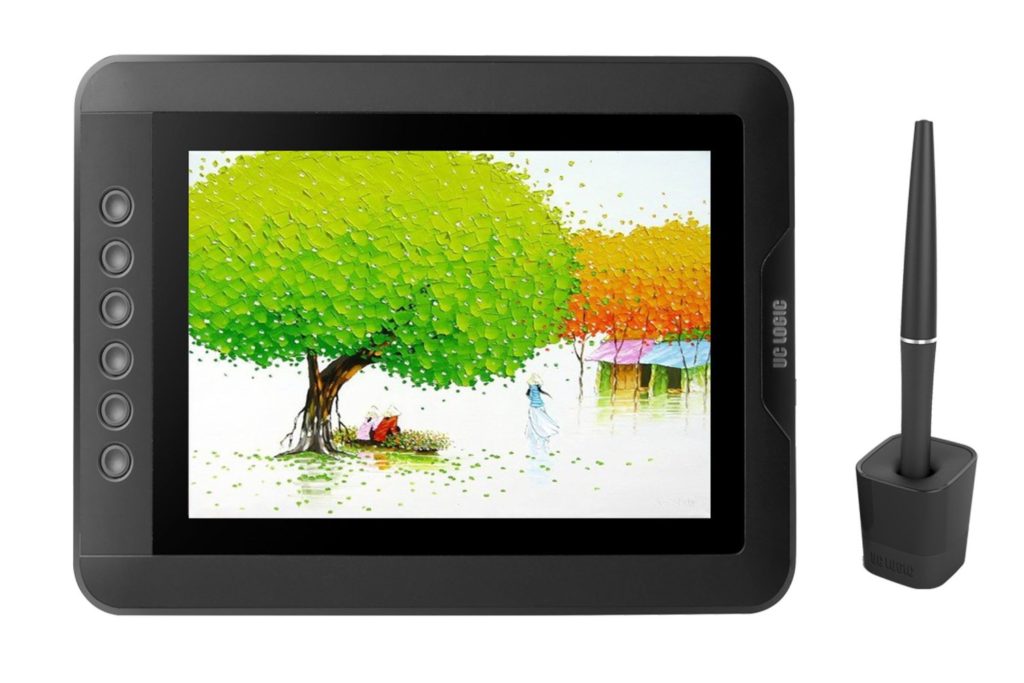
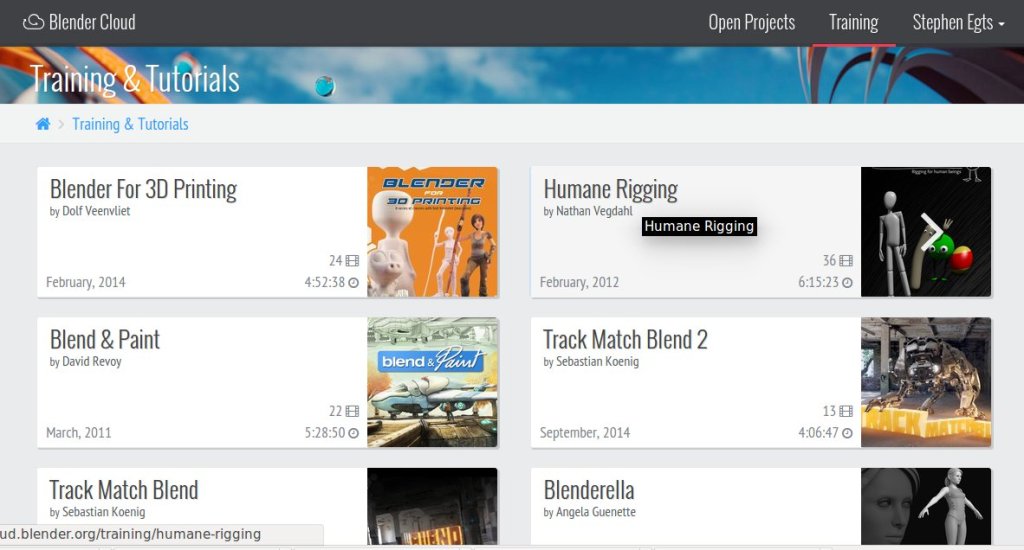

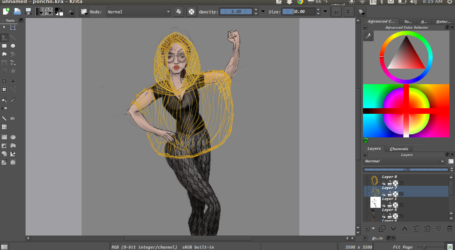
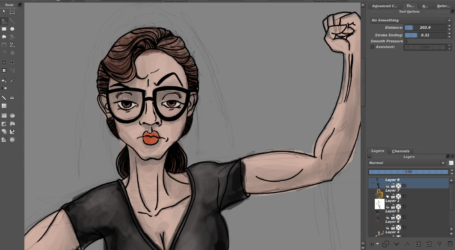
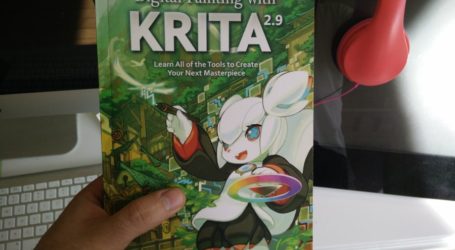
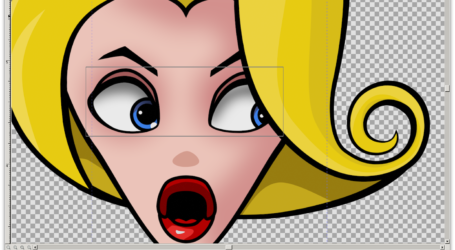
great interview. You really seem to hit on the big points with the current state and future of this application. I hope it continues to be successful!
Thanks! Glad you enjoyed. Here’s to another strong year of Krita! They’re definitely on a roll:)
Great Interview. 🙂
THX! 🙂